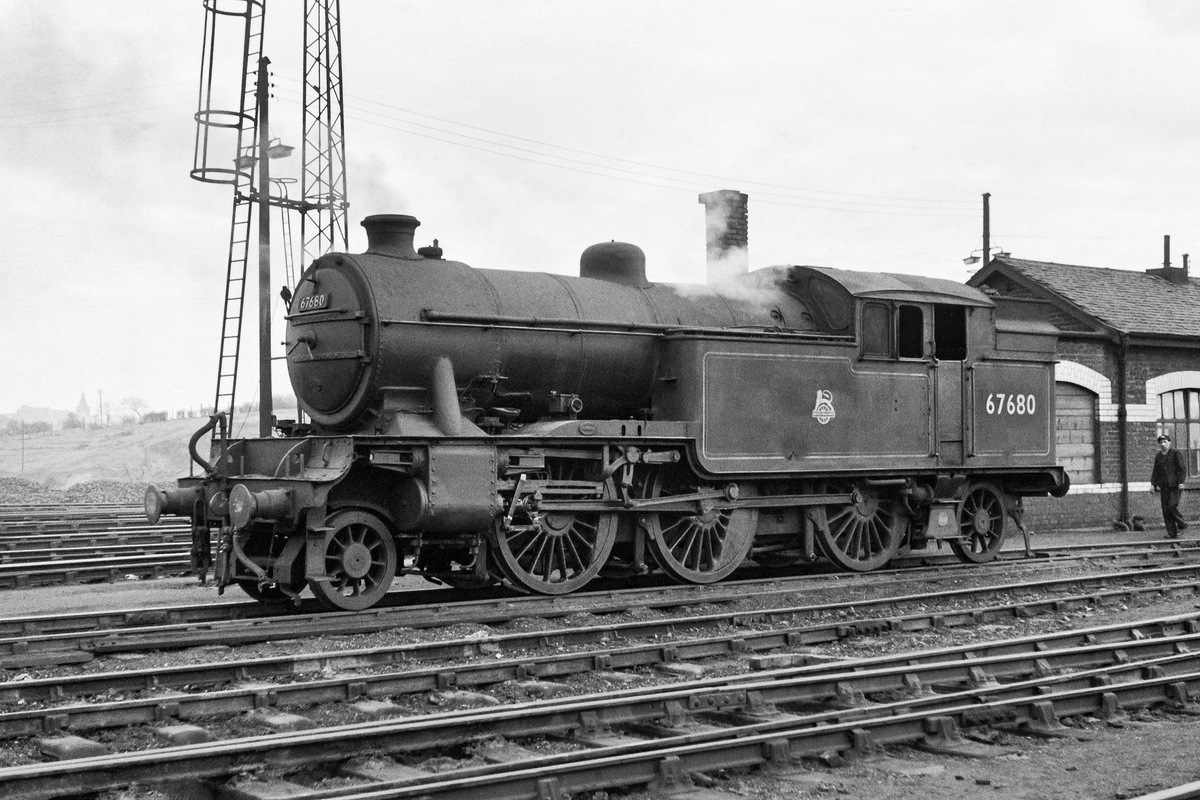Your cart is currently empty!
Sir Nigel Gresley
Sustaining the legacy

Class V1/V3
The London and North Eastern Railway classes V1/V3 were 2-6-2T steam locomotive designed by Nigel Gresley in 1930 for suburban passenger work.

The London and North Eastern Railway (LNER) class V1 and class V3 were two classes of related 2-6-2T steam locomotive designed by Nigel Gresley. A total of 92 class V1s and V3s were built between 1930 and 1939 in a total of five batches with 71 eventually being rebuilt into the higher-pressure class V3s and an additional ten being built as class V3s. The class V3 was a development of the class V1 with increased boiler pressure and a resultant increase in tractive effort.
Gresley produced his sophisticated class V1 class suburban tank locomotive in 1930. They had three cylinders with his conjugated valve gear for the central cylinder and was the first example of all three cylinders and valve chests being incorporated into a single steel casting; this arrangement was later used for the class P2 No. 2001 Cock o’ the North and the subsequent class V2, class K4 and class V4.


A total of 82 class V1s were built at Doncaster from 1930 to 1939. The last batch of ten engines ordered were built as class V3s. From 1939, a number of class V1s were rebuilt into class V3s. By 1948, four class V1s had been rebuilt as class V3s, and a further 67 would be rebuilt to class V3 specification under British Railways ownership as their boilers came due for renewal. Working pressure increased to 200 psi gave higher power and better acceleration.
The first batch of twenty-eight locomotives worked the suburban services around Edinburgh and Glasgow. These had problems during coaling operations, so different types of coal bunker were tried. The original locomotives had a coal rail. This was removed on a number of locomotives, and the eventual solution on later locomotives was to fit a coal hopper.


The class V1s and class V3s were comparatively powerful engines suited to heavy and tightly timed suburban workings. They were first used in Scotland on the Glasgow-Edinburgh-Helensburgh services. One, No. 2911, was also tried in 1931 on the Hitchin-London trains with excellent results before returning to Scotland. Over forty of these locomotives would be allocated to the Scottish suburban services.
From the mid-1930s, twenty-five would be allocated to the North Eastern Area. In the North East Area, they displaced many class A8s due to their superior adhesive weight. During World War II, five of the North Eastern class V1s were moved to Leeds to help with the increased services to the ROF factory at Thorp Arch. These returned to Tyneside in 1948. After World War II, the Whitby coastal line had its restrictions eased. This enabled the class V1s to work this difficult line which they handled particularly well.


The largest allocation south of Leeds, was fifteen locomotives allocated to the Great Eastern Section. Most of these were based at Stratford, but three were allocated to Norwich, and two were allocated at King’s Lynn. In 1948, Thompson class L1s replaced the Stratford class V1s. These were moved to the Scottish and North Eastern Sections.
Withdrawals began in 1960, with the class V1s being disposed of by 1962 and the class V3s by 1964, as diesel multiple units took over increasing numbers of suburban services, and branch line workings became fewer as lines closed or were dieselised. None of either class survived into preservation.

